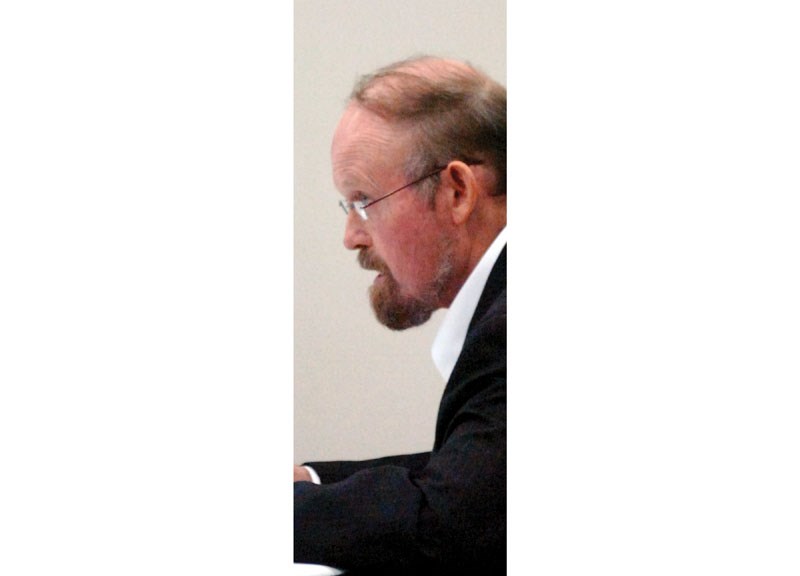Prince George engineer Chris Peter is worried cold winter weather along the proposed Northern Gateway pipeline route could reduce the structural integrity of the pipes themselves.
Peter spent more than two hours over two days questioning officials from Enbridge about detailed design specifications for the pipes and the installation process at hearings Thursday during the National Energy Board's Joint Review Panel process. After it was done, Peter said he's not convinced the company is using the proper material for the proposed $6 billion plan.
"Steel is very weak, it fractures across the crystals and it's a completely different fracture mode [in cold weather] than the fracture mode at high temperature," Peter, a principle at C.J. Peter Associates Engineering.
Peter believes Enbridge should use category two steel, which maintains its toughness at a lower temperature, while the company said it intends to use category one steel for much, but not all, of the pipeline.
Enbridge redacted some details from its public filings dealing with the composition of the steel it's requesting from its suppliers, citing competitive advantage. Peter said although legal, the omissions in the redacted information are troubling. He spent time trying to determine why some Canadian Standards Association regulations surrounding the strength of steel were left out of the company's most recent filings.
"There are attempts of obfuscation in the Enbridge redacted specification, which was redacted under a confidentiality order," Peter said. "This is the section which specifically deals with the toughness of steel, category two steel which has proven notch toughness at low temperatures, the kind of temperatures that would be encountered in the construction of the Northern Gateway pipeline. Their argument that this is going to be a buried pipe that will never be below minus-5 C is a very weak one."
Peter said if category one steel is used as planned, it could cause problems during the construction phase because the pipe will not yet be buried and could potentially be sitting exposed in cold temperatures.
Peter also presented a scenario where a full pipeline could get too cold. He said if a winter storm prevented ships to get to the Kitimat terminal and if the tanks on the coast filled up, the pipeline could sit still. If that were to occur for an extended period of time, the lack of oil moving through the pipeline would cause the temperature to cool.
"The temperature of the pipe is going to drop below the ductile-to-brittle transition temperature and then you're going to have a pipe that if you tap it with the blade of a Cat, under the kinds of pressures it's under, it's going to fail a toughness test."
James Mihell, an Enbridge consultant with Dynamic Risk Assessment Systems, said the pipe material will "address the potential for cold weather" and that Northern Gateway could use category two steel in certain higher-risk areas of the project and Enbridge senior manager strategic safety and construction management Tom Fiddler said there will be some extreme cold-weather limitations for some actions during the construction phase.
Peter set up one line of questioning, comparing the requirements American regulators have put on TransCanda's proposed Keystone XL pipeline and comparing them to the standards Enbridge has set out in its filings. At one point he asked if Enbridge was hoping Canadians wouldn't notice the U.S. requirements.
"If we shed some light on something that Enbridge may or may not be trying to conceal, we're satisfied," Peter said.
Enbridge engineering manager Ray Doering said the company was aware of the Keystone XL requirements, but wasn't influenced by them.
As a Prince George resident, Peter said he felt it was important to lend his expertise to the process.
"Essentially we've been going down the rabbit hole of finding out what the science behind the project is and being advised by people as to what the serious issues are with the construction of this pipeline from a scientific point of view, from an engineering and energy point of view," he said.



